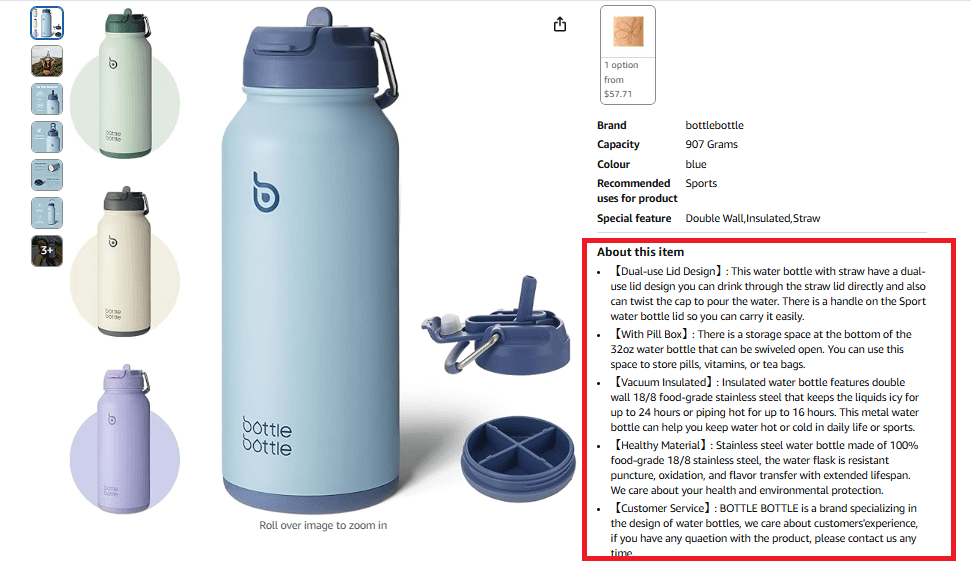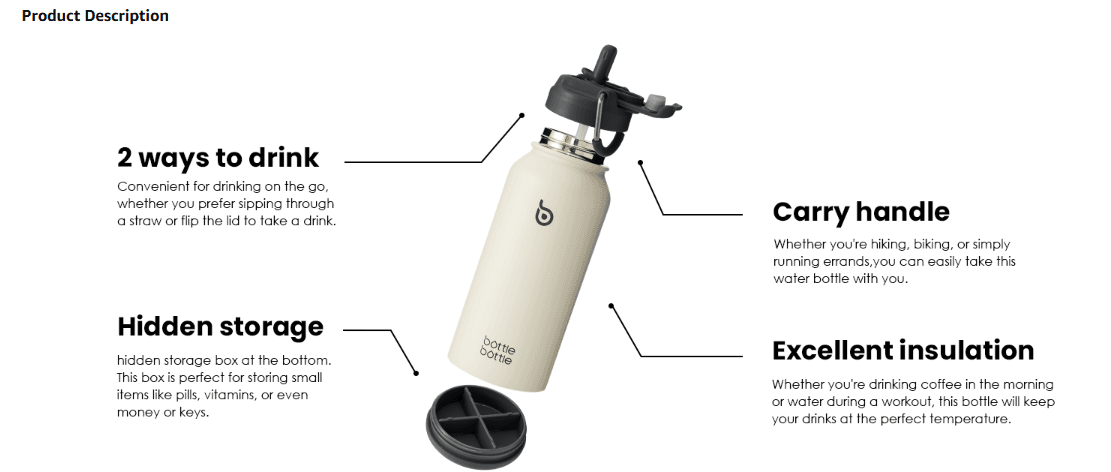Back to Page
Sell on Amazon
How to Sell on Amazon Australia
TL;DR
Amazon Australia offers access to a growing market with millions of potential customers and lower competition than other regions.
Set up your seller account, choose the right selling plan, and understand the market before listing products.
Use FBA for easier fulfillment, or FBM if you prefer to handle logistics yourself.
Price your products competitively, optimize listings with relevant keywords, and use Amazon PPC and external traffic to drive sales.
Provide excellent customer service, manage returns efficiently, and encourage reviews to improve trust and sales.
Despite challenges like lower traffic and higher shipping costs, selling on Amazon Australia can be profitable with the right strategy.
Selling on Amazon Australia is a great way to reach millions of customers and grow your business. With more people shopping online, Amazon AU gives you a chance to increase your sales and expand your reach. Whether you’re new to selling online or already have experience, Amazon Australia offers a lot of opportunities.
In this guide, we’ll show you how to set up your account, choose products, fulfill orders, and market your items.
Why sell on Amazon Australia?
Amazon Australia has grown rapidly since its launch in 2017. With millions of customers and a growing marketplace, it's a great opportunity for sellers looking to expand globally.
Expanding market: Amazon Australia’s revenue surpassed $2 billion in 2023, showing strong growth potential.
Low competition: Compared to the U.S. and U.K. markets, Amazon Australia has fewer sellers, making it easier to establish your brand.
Amazon’s infrastructure: You can leverage Amazon’s powerful fulfillment network (FBA) to handle logistics effortlessly.
If you're already selling on Amazon in other regions, expanding to Australia can be a smart move with minimal effort.
How to sell on Amazon Australia?
Step 1: Set up your Amazon Australia seller account
To start selling on Amazon Australia, follow these simple steps:
Create an Amazon Australia seller account by signing up at Amazon Seller Central.
Select a selling plan:
Individual plan: Costs AUD $0.99 per item sold. Ideal for small sellers testing the platform.
Professional plan: Costs AUD $49.95 per month, plus referral fees. Best for those looking to scale.
Enter your business details: Provide your business name, tax information, bank details, and verify your identity.
Once your account is set up, you’re ready to start listing your products and making sales. As an Amazon seller, you can select the best Amazon management services for growth and proactive account management.
Step 2: Understand Amazon Australia’s marketplace and categories
Before listing your products, it’s important to understand the market in Australia. This will help you choose the right products to sell and increase your chances of success.
How to research the market
Check Amazon’s Best Sellers page to see what products are in high demand.
Use tools like Helium 10 or Jungle Scout to analyze sales trends and competition.
Look at customer reviews on similar products to understand what buyers like and dislike.
Research seasonal trends to know when demand for specific products is highest.
Popular categories in Amazon Australia
Some categories perform better than others in Australia. Here are the most popular ones:
Electronics: Smartphones, accessories, and smart home devices.
Health & beauty: Skincare, supplements, and cosmetics.
Home & kitchen: Storage solutions, kitchen gadgets, and home decor.
Sports & outdoors: Fitness equipment, outdoor gear, and activewear.
Choosing the right category
Sell products with consistent demand: Avoid highly seasonal items unless you have a strong marketing plan.
Check category restrictions: Some categories, like health products, require approval.
Avoid oversaturated markets: If a product has too many competitors, it may be difficult to stand out.
Pro Tip:
If you're new to selling, start with a category that has moderate competition and strong demand. This gives you a better chance to gain traction without getting lost among too many competitors.
Step 3: Source and list your products
Finding reliable suppliers:
Private label: Purchase products from manufacturers in China (Alibaba) or Australia, then sell them under your own brand. You have full control over branding and pricing.
Wholesale: Buy products in bulk from Australian distributors and resell them at a profit. This method requires upfront investment but allows for higher margins.
Dropshipping: List products in your store without holding inventory. When a customer places an order, the supplier ships it directly. This method has low risk but lower profit margins.
To make your products easy to find and appealing to buyers:
Title: Write clear, keyword-rich titles (“Wireless Bluetooth Earbuds with Noise Cancelling, 30-Hour Battery Life”).
Bullet points: Highlight key features and benefits in easy-to-read points. It helps you to improve your Amazon optimization.

Description: Use simple language to explain why your product is useful. Address common customer concerns.

Images: Upload high-quality pictures showing your product from different angles. Clear, bright images attract more buyers.

Backend Keywords: Add hidden keywords to improve search rankings and reach more customers.
You can increase sales by 30% after improving your Amazon product photography and adding better keywords to your listings.
Step 4: Fulfill orders – FBA vs. FBM in Australia
Amazon Australia allows two fulfillment methods.
Fulfillment method | Description | Best for |
Fulfilled by Amazon (FBA) | Amazon stores, packs, and ships your products. Provides Prime eligibility, increasing sales. Amazon also handles customer service and returns. However, costs include storage and fulfillment fees. | Sellers who want a hands-off approach and higher conversions. |
Fulfilled by Merchant (FBM) | You store, pack, and ship orders yourself. This gives you more control over inventory and costs. It's best for large or oversized products. | Sellers with an established logistics system or unique products. |
Step 5: Pricing strategies and Amazon AU fees
Amazon Australia’s pricing should balance competitiveness and profitability. To ensure success, sellers must choose the right pricing model and understand Amazon’s fee structure.
Pricing strategy | Description | Best for |
Cost-Plus pricing | Add a profit margin to the total cost of production, shipping, and fees. Ensures profitability but may not always be competitive. | Sellers with unique or premium products. |
Competitive pricing | Research competitors’ prices and set your price at the same level or slightly lower to attract buyers. | Sellers in competitive markets who need to win the Buy Box. |
Dynamic pricing | Use automated tools like RepricerExpress to adjust prices in real-time based on demand, competition, and other factors. | Sellers who want to maximize profits while staying competitive. |
Amazon Australia’s fees
Fee type | Details |
Referral fees | 6% – 15% depending on the product category. This is Amazon’s commission for each sale. |
FBA fees | Varies based on the size and weight of the product. Includes storage and fulfillment costs. |
Closing fees | Applied to media products like books, DVDs, and video games. |
You can reduce your ad spend by 25% by using dynamic pricing tools, ensuring their prices remain competitive without manually adjusting them multiple times a day.
Step 6: Marketing and advertising your products
To increase sales, you need to market your products well. Here’s how:
Amazon PPC advertising: Run sponsored product ads to show up in Amazon search results. Use automatic campaigns to gather data, and manual campaigns to improve performance.
External traffic: Use Google Ads, Facebook, and Instagram to send more traffic to your listings. Running social media ads helps attract more customers.
Influencer marketing: Work with social media influencers to promote your products. Influencers create engaging content that helps spread the word and increase sales.
Email marketing: Collect customer emails and send promotions. Offering discounts or updates on new products helps keep customers coming back.
SEO optimization: Use the best keywords in your listings to improve visibility. Make sure your titles, bullet points, and descriptions include the right search terms.
Promotions and discounts: Offer deals like limited-time discounts, coupons, or buy-one-get-one-free offers to attract more buyers.
As an Amazon seller, you can increase sales by 40% after starting an Amazon PPC management that targets high-converting keywords.
Step 7: Handling customer service and returns
Providing great customer service leads to better reviews and more sales. Here are some best practices to follow:
Respond quickly: Answer customer questions within 24 hours. Quick replies build trust and help prevent negative reviews.
Be professional: Always be polite and helpful when answering customer inquiries or handling complaints.
Manage returns easily: If using FBA, Amazon handles returns for you. If using FBM, make sure your return policy is clear and the process is easy for customers.
Encourage reviews: After a sale, send a message asking happy customers to leave a review. Positive reviews boost your credibility and search rankings.
Resolve issues quickly: If a customer leaves negative feedback, respond professionally and offer solutions like a refund or replacement.
Use feedback to improve: Look at complaints and negative reviews to find areas where you can improve your product or service.
A seller increased their rating from 3.5 to 4.8 stars by responding to customer questions within two hours.
Challenges and tips for success in Amazon AU
#1: Lower traffic than Amazon U.S.
Amazon Australia has a smaller customer base compared to the U.S., making it harder to generate sales quickly.
Winning tip: Use Amazon Australia Lightning Deals to boost visibility and increase conversions. Running time-sensitive promotions encourages urgency and attracts more buyers.
#2: Higher shipping costs
Due to Australia’s size and fewer fulfillment centers, shipping costs can be high.
Winning tip: Optimize logistics by using local warehouses and negotiating better rates with couriers. Consider partnering with third-party logistics (3PL) providers to lower costs.
#3: Limited Prime subscribers
Amazon Prime membership is not as widespread in Australia as in other countries, reducing the number of Prime-eligible purchases.
Winning tip: Offer free shipping or discounts to attract non-Prime customers. Additionally, optimize A+ Content for better product presentation and higher trust, which can help convince buyers.
#4: Intense competition in popular categories
While competition is lower than in the U.S., top-selling categories still have strong competition.
Winning tip: Monitor competitor pricing and trends regularly to stay competitive. Adjust your prices strategically and differentiate your products with better listings and branding.
#5: Low brand recognition for new sellers
Shoppers may hesitate to buy from new sellers without reviews or brand awareness.
Winning tip: Use social media ads and influencer marketing to drive external traffic to your Amazon listings. Leverage social proof and customer testimonials to build credibility.
#6: Difficulty in maintaining consistent sales
Sales can fluctuate, especially for seasonal products or during slow periods.
Winning tip: Test different pricing strategies and promotions to find what works best. Running occasional flash sales or bundling products can keep sales steady throughout the year.
Is selling on Amazon Australia worth it?
Yes, selling on Amazon Australia is worth it if you use the right approach. While the Australian market is smaller than the U.S., it is growing rapidly and has less competition, making it easier for new sellers to establish themselves.
To succeed, you need to focus on smart pricing to stay competitive, optimize your product listings to attract buyers, and use effective advertising to drive traffic to your products. Take advantage of Amazon's FBA service to simplify logistics and improve customer experience. By using these strategies, you can build a profitable and sustainable business on Amazon Australia.
Final thoughts
Selling on Amazon Australia is a great way to grow your business and reach many customers. By following the right steps like setting up your account, sourcing products, and improving your listings, you can succeed in this marketplace.
However, many challenges hurt your sales and performance. Here, our expert Amazon consultants can help you with everything, from setting up your store to managing customer service and marketing.






